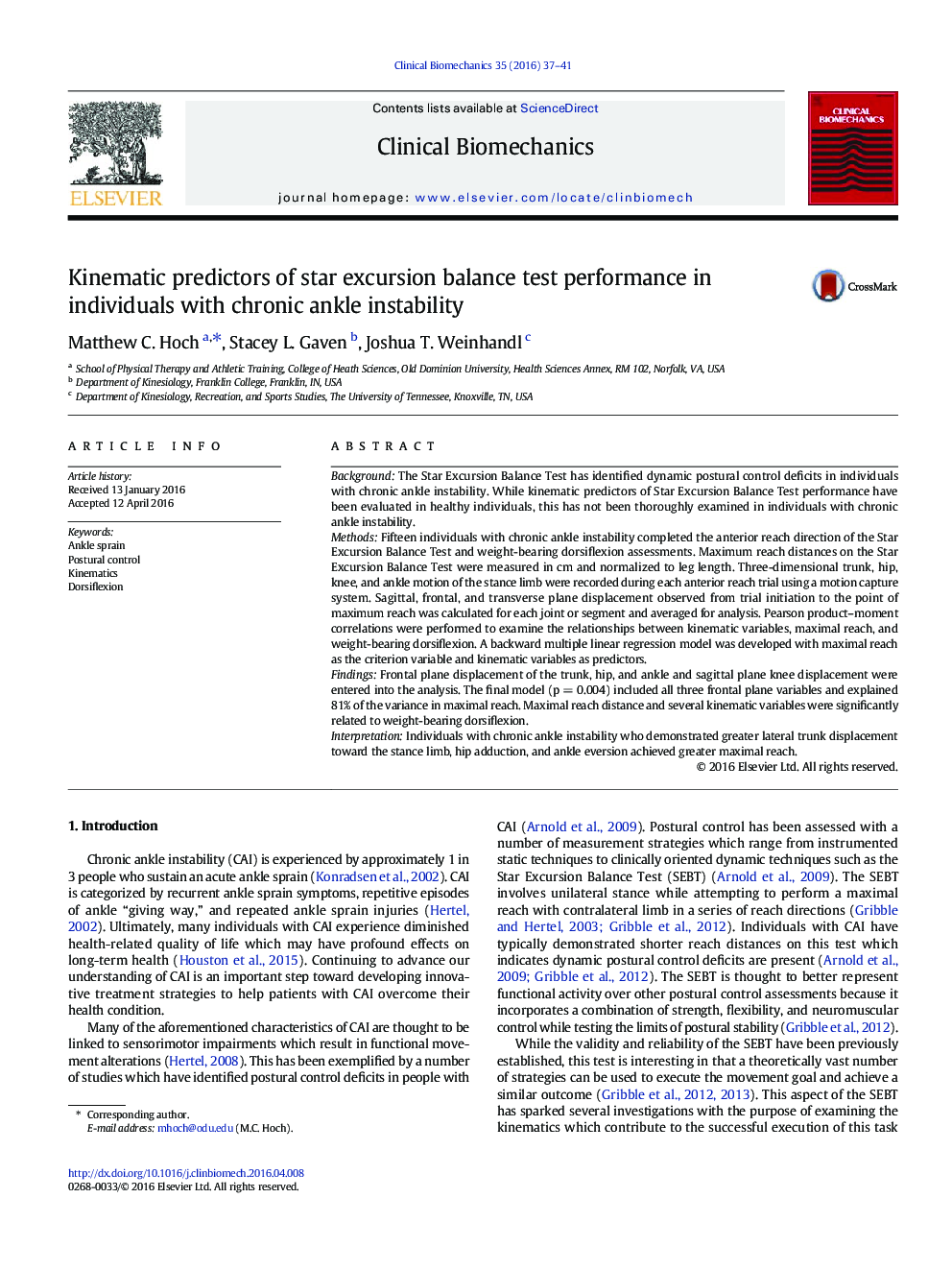| کد مقاله | کد نشریه | سال انتشار | مقاله انگلیسی | نسخه تمام متن |
|---|---|---|---|---|
| 4050106 | 1603743 | 2016 | 5 صفحه PDF | دانلود رایگان |
• Frontal plane motion contributed to reach distance in those with ankle instability.
• Dorsiflexion range of motion is an intermediary determinant of reach distances.
• Ankle instability may promote alternate strategies to execute functional tasks.
BackgroundThe Star Excursion Balance Test has identified dynamic postural control deficits in individuals with chronic ankle instability. While kinematic predictors of Star Excursion Balance Test performance have been evaluated in healthy individuals, this has not been thoroughly examined in individuals with chronic ankle instability.MethodsFifteen individuals with chronic ankle instability completed the anterior reach direction of the Star Excursion Balance Test and weight-bearing dorsiflexion assessments. Maximum reach distances on the Star Excursion Balance Test were measured in cm and normalized to leg length. Three-dimensional trunk, hip, knee, and ankle motion of the stance limb were recorded during each anterior reach trial using a motion capture system. Sagittal, frontal, and transverse plane displacement observed from trial initiation to the point of maximum reach was calculated for each joint or segment and averaged for analysis. Pearson product–moment correlations were performed to examine the relationships between kinematic variables, maximal reach, and weight-bearing dorsiflexion. A backward multiple linear regression model was developed with maximal reach as the criterion variable and kinematic variables as predictors.FindingsFrontal plane displacement of the trunk, hip, and ankle and sagittal plane knee displacement were entered into the analysis. The final model (p = 0.004) included all three frontal plane variables and explained 81% of the variance in maximal reach. Maximal reach distance and several kinematic variables were significantly related to weight-bearing dorsiflexion.InterpretationIndividuals with chronic ankle instability who demonstrated greater lateral trunk displacement toward the stance limb, hip adduction, and ankle eversion achieved greater maximal reach.
Journal: Clinical Biomechanics - Volume 35, June 2016, Pages 37–41
